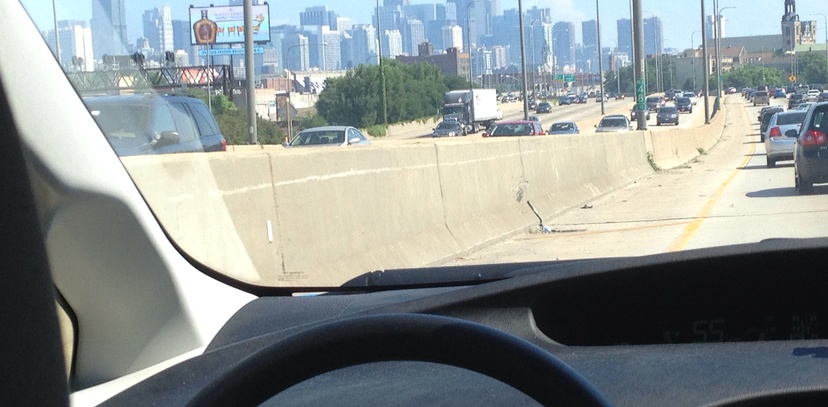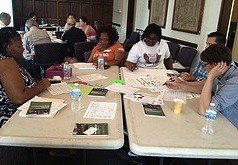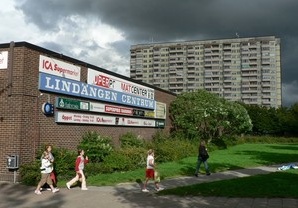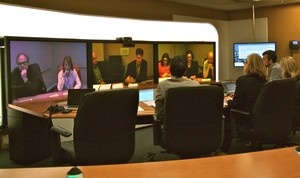
Nicola Bacon updates on our work in Malmö and Chicago.
Since the beginning of the year Social Life has been working in Malmö and Chicago to develop the practical work of our Social Life of Cities collaborative. The tasks in both places have been seemingly different: to help the City of Malmö develop a new approach to tackling the inter-connected problems of their run-down and ethnically diverse suburbs; and in Chicago to work with the University of Chicago, south side community organisers and a developer, McCaffery Interests, to create a new digital platform to help communities become more resilient.
We took a user-centered design approach for both pieces of work.
In Chicago, over two summers, we ran three design workshops, initially to identify ideas for using digital technology to boost resilience in the South Side of Chicago, and then (informed by a scope of possibilities) using personas to develop a fuller concept. The priorities for the focus of our work were identified by our partners in Chicago, who told us that the ideas that resonated most were around equipping communities to feel more empowered in the face of violence.
Chicago's South Side is renowned for its pernicious levels of crime that pervade every aspect of life. We spoke to high school students on university Summer programmes and they told us about how their lives had been touched by the shootings of close family and friends, as portrayed in US documentarian Jon Lowenstein's film about violence in his home neighbourhood.
We have been developing an app which will, in its first iteration, provide accurate as-near-to-real-time-as-possible information about incidents, and will then layer this with community reporting and information about safe havens, safe routes to school, and community programmers.
Our starting point to the design process - using the experience of residents as the basis for developing "personas" - enabled the participants in our workshops to put the lived experience of residents at the centre of technology design. We hope that through this we can create a platform that gives residents the information, and the capacity to network and build their collective capacity, and in doing so build community resilience.
In Malmö we have been exploring how the city could think about the regeneration of its suburbs, focusing on Lindängen, a peripheral area built as part of the Swedish government's million homes programme between 1965 and '75. Lindängen is now home to people from many countries, ethncities and faiths. Its first residents included Chilean refugees, and successive groups of refugees have made their home in the area since then. This has made Lindängen one of the most diverse parts of Malmö, a city where over 40 per cent of the population are first or second generation immigrants.
Lindängen has had a declining employment rate, which is predicted to continue, school results are poor compared to the rest of the city and people report that the feel unsafe. New investment has been channelled into the area with (as yet) little impact on its main social problems.
To develop our placemaking model - and by placemaking we mean an approach that brings in all the actors and factors that create a flourishing place - our starting point was to ask how we can put people at the centre of placemaking in Lindängen? We distilled the relevant lessons of similar programmes, the New Deal for Communities, Communities that Care, the US Promise Neighbourhoods and the Knight Foundation's Soul of the Community work: building the capacity of individuals - their wellbeing, resilience and capacity to act - as well as tackling deficits like unemployment and crime; focusing on how people feel about places, starting from the assets that already exist; and avoiding silos and over-rigid processes.
We looked at the evidence of the what Lindängen's residents thought about their neighbourhood, and ran a workshop with local NGOs. We were told that many of the challenges faced by areas like Lindängen stem from the relationships between different groups, how Swedish neighbourhods evolve to encompass people with very different cultural and religious backgrounds, and how public agencies can recognize the assets and strengths of communities that different from the traditional Swedish norm. We found that ethnic minority communities had strong social networks that were often invisible to agencies; and relationships with the Arab world that could become the basis of future enterprises.
We created a model that built on the best of what we know about making places thrive; and the best of what we know about innovation to meet social need in local areas. We then thought about the potential to finance this through social investment. We convened two TelePresences bringing together expert participants from Chicago, New York, London, Copenhagen, Luxembourg, Brussels, Seoul and Sydney, to discuss and enrich the work.
Malmö City's Environment Department are now having productive conversations with the Swedish government, property owners, EIB and potential investors including pension funds, about how this work could be supported in the long term through social investment.
The common factor for our work in Malmö and in Chicago was to start with lived experience and think about what makes people thrive, rather than being led by changes to the physical environment or a focus on deficits, on problems, like unemployment or crime. This is the core approach of our Social Life of Cities work.
"Putting people at the centre of placemaking" is easy to say but difficult to do. Our work suggests that making this the starting point for discussions about change can lead to results that resonate in different circumstances. The City of Malmö's new approach to comprehensive social and physical regeneration will evolve in coming months; and our work in Chicago is still moving on into a new second phase of app development. We would be overclaiming to say that the work we have done is cracking entrenched problems, but we do think we are developing techniques and approaches that will be transferrable elsewhere. We will continue to analyse the implications of our work with the Social Life of Cities Collaborative as it moves on to work in new cities in the next year.


